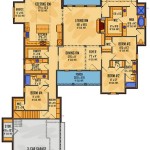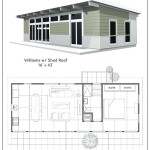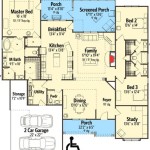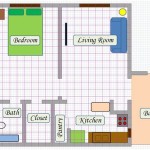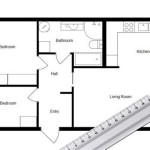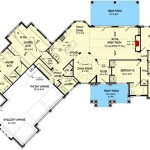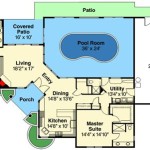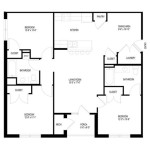Decoding Small and Tiny House Plans: A Comprehensive Guide
The concept of small and tiny house living has surged in popularity, fueled by factors such as increased environmental awareness, financial constraints, and a desire for minimalist lifestyles. At the heart of this movement lies the critical component of comprehensive and well-designed house plans. These plans serve as the blueprint for constructing a dwelling that maximizes space efficiency, functionality, and aesthetic appeal within a compact footprint. This article delves into the complexities of small and tiny house plans, exploring their various aspects and providing insights into their effective utilization.
Small and tiny houses are generally defined by their size, typically ranging from under 400 square feet for tiny houses to under 1,000 square feet for small houses. The plans for these structures differ significantly from those of conventional homes due to the inherent need for optimized space utilization. Every square inch must be carefully considered and designed to serve multiple functions, ensuring that the living space remains comfortable and practical.
Understanding the Key Considerations in Small and Tiny House Plans
The creation of successful small and tiny house plans requires careful consideration of several key factors. Addressing these elements during the planning phase is crucial to achieving a functional and aesthetically pleasing living space.
First and foremost, spatial efficiency is paramount. The limited square footage necessitates innovative design solutions to maximize usable space. This often involves incorporating multi-functional furniture, such as sofa beds, fold-down tables, and storage beds. Vertical space utilization is equally important, with lofts, high shelving, and stacked appliances becoming common features. The plans must clearly delineate how these elements will be integrated to ensure seamless functionality and accessibility.
Another crucial consideration is natural light and ventilation. Small spaces can feel cramped and claustrophobic if poorly lit and ventilated. Plans should prioritize large windows, skylights, and strategically placed doors to maximize natural light penetration and cross-ventilation. Proper ventilation is especially critical in areas like kitchens and bathrooms to prevent moisture buildup and maintain air quality. The orientation of the house on the property should also be factored in to optimize sunlight exposure and minimize energy consumption.
Storage solutions are also critical aspect of small and tiny house design. Due to the reduced amount of available space, careful consideration must be given to storage options. This includes the use of built-in shelving, hidden storage compartments, and creative solutions for storing personal belongings. The plans should clearly illustrate the location and dimensions of all storage spaces, ensuring they are easily accessible and effectively utilized. Optimizing storage is essential to maintaining a clutter-free and organized living environment.
Types of Small and Tiny House Plans
Small and tiny house plans come in a diverse range of styles and layouts, each catering to different needs and preferences. Understanding the various types of plans available can help individuals make informed decisions and select the design that best suits their specific requirements.
One common type is the single-story design, which features all living spaces on a single level. This is often favoured for its accessibility and ease of construction. Single-story plans are particularly suitable for individuals with mobility limitations or those who prefer a minimalist aesthetic. However, they typically require a larger footprint compared to multi-story designs.
Two-story designs, on the other hand, utilize vertical space to maximize living area within a smaller footprint. These plans often incorporate a loft area for sleeping or storage, freeing up ground-level space for living and dining areas. Two-story designs can be more challenging to construct but offer a greater sense of spaciousness and privacy.
Another popular option is the trailer-based tiny house, which is built on a trailer chassis for mobility. These houses are typically smaller than traditional small houses and are subject to specific regulations regarding size and weight. Trailer-based tiny house plans must account for the mobility constraints and ensure structural integrity during transportation.
In addition to these basic types, there are also numerous variations and hybrid designs that combine elements from different styles. Ultimately, the choice of plan depends on individual preferences, budget, and lifestyle considerations.
Essential Elements Included in the Small and Tiny House Plans
A comprehensive small or tiny house plan goes beyond basic floor layouts. It encompasses a detailed set of documents that provide all the necessary information for construction. These plans typically include the following essential elements:
First, detailed floor plans are the foundation of any house plan. These plans provide a top-down view of the house, showing the layout of rooms, the placement of furniture, and the location of doors and windows. Accurate dimensions are crucial, as even small errors can have a significant impact on the overall functionality and appearance of the house. The floor plans should also indicate the location of electrical outlets, plumbing fixtures, and other essential utilities.
Elevation drawings are also critical, which provide a view of the house from the outside, showing the exterior appearance and roofline. These drawings illustrate the placement of windows, doors, and other architectural features, as well as the materials and finishes to be used. Elevation drawings are essential for visualizing the finished product and ensuring that the house blends harmoniously with its surroundings.
Foundation plans detail the design of the foundation, which is the base upon which the house rests. These plans specify the type of foundation to be used, such as a slab-on-grade, crawl space, or basement, as well as the dimensions and reinforcement requirements. A well-designed foundation is essential for ensuring the structural integrity and stability of the house. The foundation plans are typically prepared by a structural engineer to meet local building codes and regulations.
Framing plans illustrate the structural framework of the house, including the walls, roof, and floor joists. These plans specify the size, spacing, and connection details of the framing members, ensuring that the house can withstand wind, snow, and other environmental loads. Framing plans are typically prepared by a structural engineer and must comply with local building codes. Detailed framing plans contribute to the safety and longevity of the structure.
Electrical plans show the layout of the electrical system, including the location of outlets, switches, lights, and wiring. These plans must comply with electrical codes and regulations to ensure safety and prevent fire hazards. Electrical plans should also specify the size and capacity of the electrical service panel and the wiring used throughout the house.
Plumbing plans detail the layout of the plumbing system, including the location of water pipes, drains, and fixtures. These plans must comply with plumbing codes and regulations to ensure proper water supply and waste disposal. Plumbing plans should also specify the size and type of pipes used, as well as the location of cleanouts and vents.
Roofing plans, as its name implies, specify the design of the roof, including the type of roofing material, the slope, and the drainage system. These plans must be designed to effectively shed water and prevent leaks. Roofing plans should also consider the climate and weather conditions of the area, as well as local building codes.
Finally, material schedules provide a comprehensive list of all the materials required for construction, including quantities, sizes, and specifications. This schedule is essential for accurate cost estimation and efficient material procurement. Material schedules should be as detailed as possible to minimize waste and ensure that all necessary materials are available when needed.
The completeness and accuracy of these plans are crucial for a successful construction project. Any omissions or errors can lead to delays, cost overruns, and structural issues.
In summary, constructing a small or tiny house is a complex undertaking that requires careful planning and execution. By understanding the key considerations, types of plans, and essential elements involved, individuals can make informed decisions and create a living space that is both functional and aesthetically pleasing. The detail and completeness of the selected plan will significantly impact the overall success of the project.

27 Adorable Free Tiny House Floor Plans

27 Adorable Free Tiny House Floor Plans Little Small Cottage

27 Adorable Free Tiny House Floor Plans Craft Mart

Tiny House Plans Small Floor

Tiny House Floor Plans With Lower Level Beds Tinyhousedesign

27 Adorable Free Tiny House Floor Plans Craft Mart

Tiny House Plan Examples

Small Bungalow House Plans

Tiny House Plans For Families The Life
House Plan Of The Week Tiny Home With Clever Details Builder

